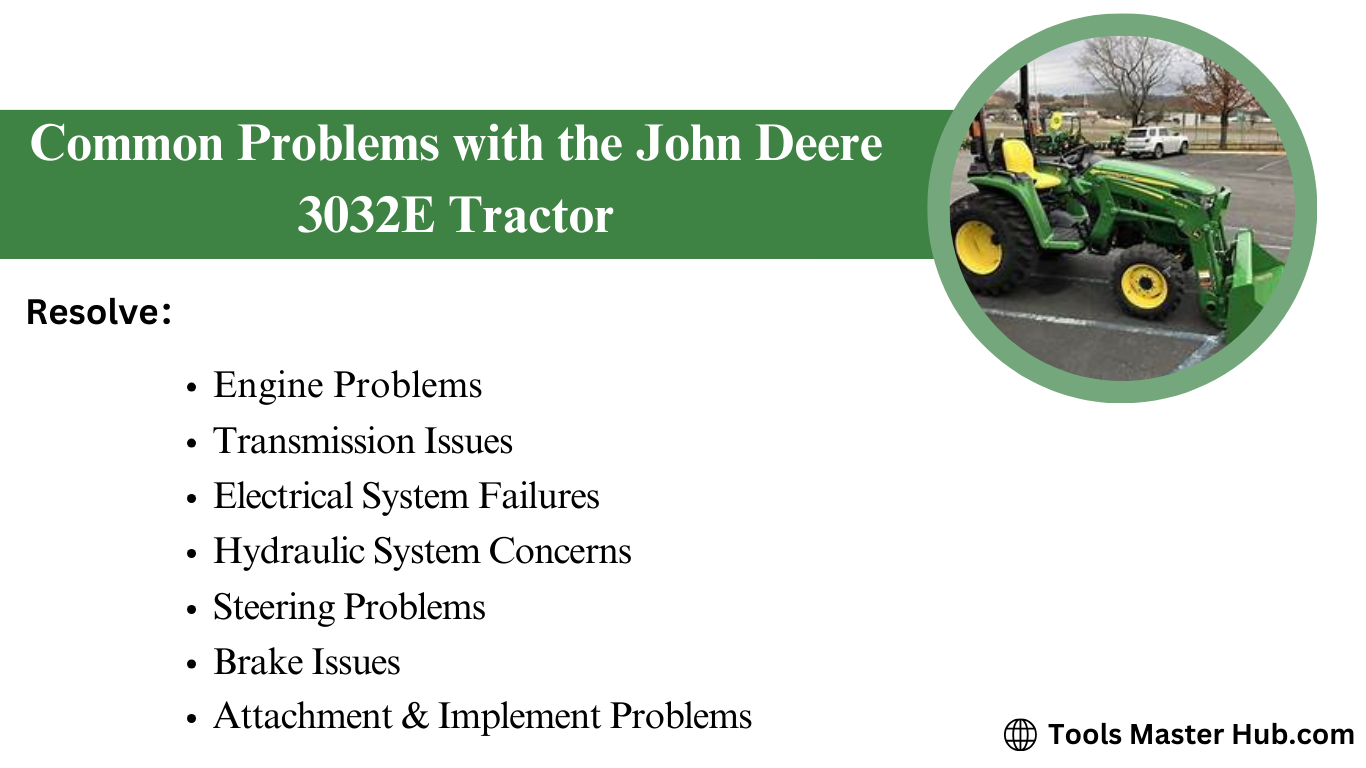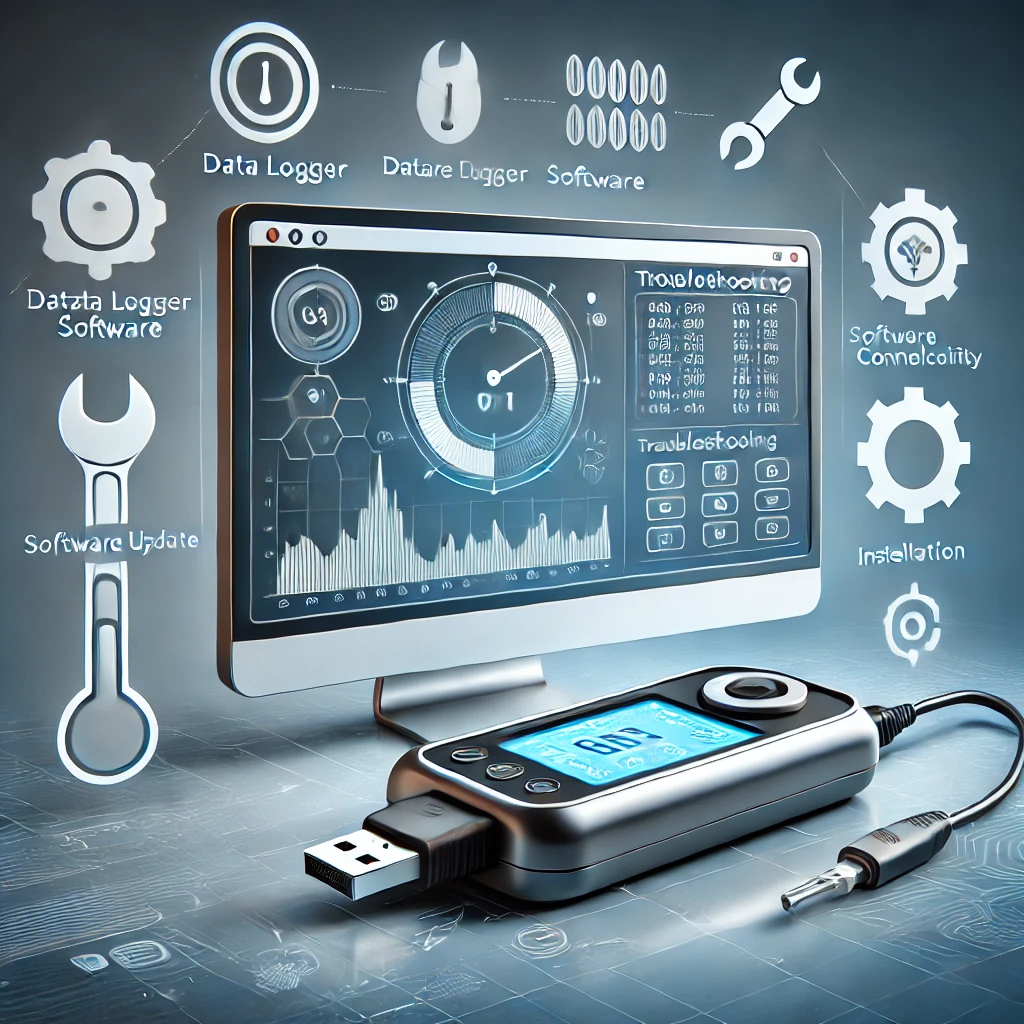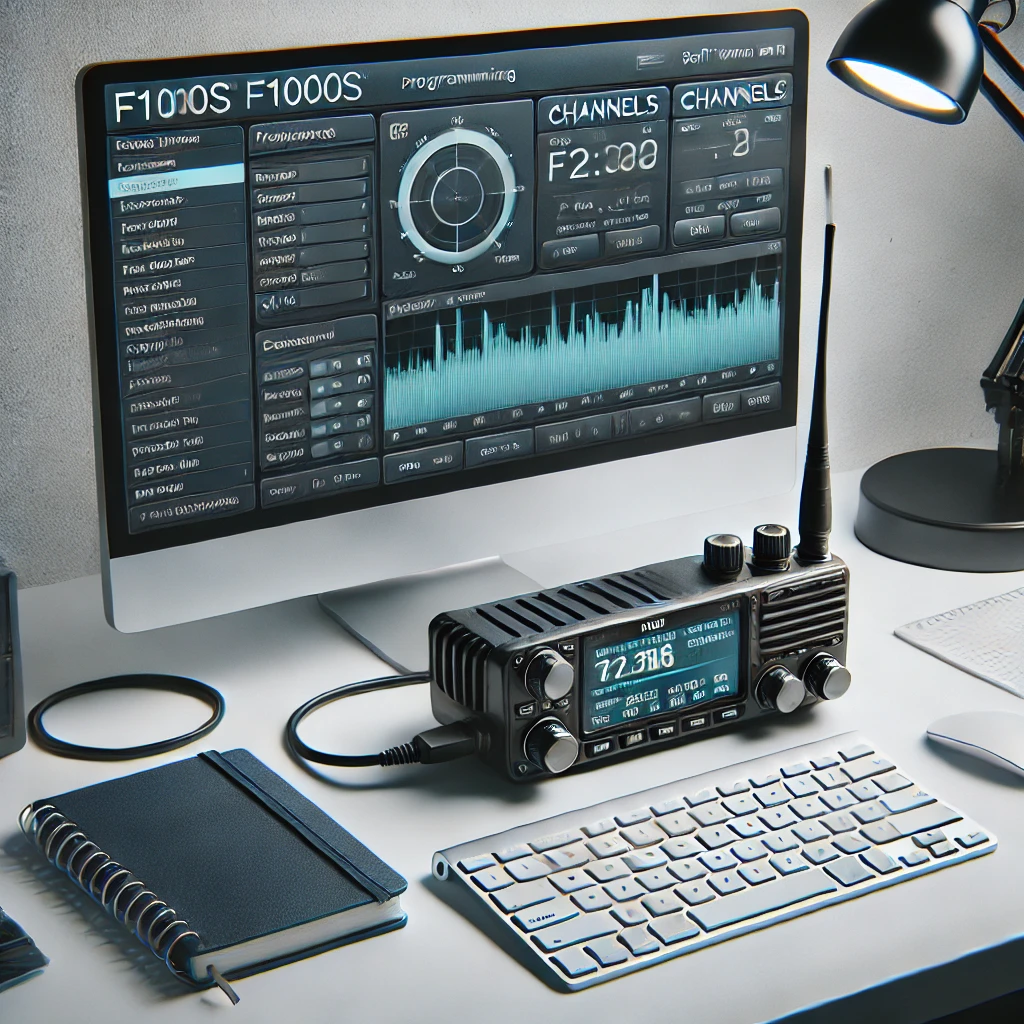Introduction
The John Deere 3032E is a well-liked compact utility tractor that is known for its versatility, dependability, and strong performance. The 3032E has gained popularity among small land owners and hobby farmers because it can complete multiple tasks ranging from landscaping and gardening to light farming. Nevertheless, as with any other equipment, it also has some issues. Therefore, the knowledge of these problems is important to current and future users as this will help them gain maximum benefits from their investment and avoid surprises in terms of the downtime.
There cannot be an overemphasis on the significance of having a clear insight on potential hitches associated with John Deere 3032E. Understanding recurring problems helps owners recognize early symptoms, avoiding simple inconveniences and costly repair works. Furthermore, those who wish to buy one must possess such knowledge to make an informed decision regarding the right choice for their particular needs.
This article aims at covering some common problems faced by users of the John Deere 3032E in its entirety. We want you to know about these things in order that you may effectively maintain your own tractors, prolong their lives as well as make them perform at their best ever through discussing detailed problems with their causes and possible remedies giving you conclusive decisions on such eventualities.
Engine Problems
Even though the engine of a John Deere 3032E is well built; users may find themselves with certain challenges. Two examples include difficulty starting up or overheating problems.
Hard Starting
One frustrating problem that arises when using the John Deere 3032E is that it fails to start easily when trying out its engine. Several factors can cause this problem:
Fuel Issues: Engine performance could be greatly affected by poor fuel quality or contaminated fuel.
Glow Plug Problems: In order to start diesel engines during cold weather conditions glow plugs are very essential components whose failure may cause hard starting.
Battery Issues: a weak or dead battery will hinder engine from starting smoothly.
Solutions:
Regular Maintenance: Perform regular maintenance checkups on the fuel system.
Checking Fuel Quality: Always use high-quality fuel and periodically check for contamination.
Replacing Glow Plugs or Batteries: In case glow plugs are faulty, replace them. Similarly, ensure the battery is in good condition and replace it if necessary.
Overheating
Engine overheating is another common problem. If not addressed promptly, this may lead to extreme damage. The major causes of this issue include;
Clogged Radiators: Dirt, debris and grass can clog the radiator leading to air flow restrictions.
Low Coolant Levels: Insufficient coolant results into overheating.
Defective Thermostat: A thermostat that does not open properly can cause the engine to overheat.
Solutions:
Cleaning the Radiator: It is important that you clean your radiator more often in order to facilitate airflow across it.
Checking and Refilling Coolant: Always maintain adequate levels of coolant and check for leaks regularly.
Replacing the Thermostat: In case of a malfunctioning thermostat replace with new ones so as to enable proper cooling action by an engine.
Transmission Issues
The transmission system in John Deere 3032E gives smooth operations but there may be some problems. Hydrostatic transmission problems and gear-shifting difficulties are among the standard concerns that should also be highlighted.
Hydrostatic Transmission Problems
Hydrostatic transmissions offer smooth and flexible operation but can be problematic if not maintained properly. Common causes include:
Low Hydraulic Fluid: Reduced hydraulic fluid may diminish overall performance of the transmission
Dirty Filters: Filtration process may have been compromised due to dirtiness or filters might be blocked with foreign particles hampering flow rate for fluids
Mechanical Wear Out; internal parts tend to wear out after several times of being used over time
Solutions:
Regular Fluid Checks and Changes: Frequently check and maintain the correct levels of fluid. Change hydraulic fluid as per manufacturer recommendations.
Replacing Filters: Regularly replace transmission filters to ensure clean fluid flow.
Professional Inspections: Have a professional examine the transmission in search for signs of deterioration occasionally.
Gear Shifting Difficulties
The tractor’s usability may be hampered by difficulties in shifting gears. Common causes include:
Linkage Adjustments: Improper or worn-out linkages may inhibit shifting.
Clutch Problems: Worn out or damaged clutches can make gear changes difficult.
Solutions:
Proper Linkage Adjustments: Check and adjust linkage regularly for smooth shifting gears.
Clutch Maintenance or Replacement: Carry out proper maintenance on your clutch system; you might need to replace it if it is significantly worn out.
By fixing these problems early with regular services and repair, John Deere 3032E owners can keep their tractors working well over many years ahead of them for reliable performance.
Electrical System Failures
Electrical issues in the John Deere 3032E can lead to various operational problems. Two of the most common electrical failures are battery drain and wiring issues.
Battery Drain
Your tractor may fail to start due to battery drain there by causing a lot of downtime. The reasons include:
Faulty Alternator: An alternator charges the battery as engine runs, but if it is defective, then your battery will never charge leading to draining off all its power supply.
Parasitic Drains: Some electric devices still continue drawing current even after shutting down your tractor that leads into slow drainage of the cell power supply gradually over time.
Solutions:
Testing and Replacing the Alternator: Test your alternator’s output using multimeter. Replace it when it does not charge the battery properly again.
Checking for and Eliminating Drains; Look at possible components in electrical systems which could take away some power in case the tractor is switched off. Disconnect each component one by one so as to identify the source and deal with it separately.
Wiring Issues
Wiring issues can cause a range of electrical problems, from intermittent faults to complete system failures. Common causes include:
Corroded Connections: Dampness and dirt that enter into electrical connections results in corrosion hence they become poor conductors.
Damaged Wires: This may involve wearing out of wires physically due to rubbing against objects, animals bites or accidents that lead to disturbance in electric circuit.
Solutions:
Inspecting and Repairing Connections: Regularly check electrical connections for signs of corrosion. Clean and repair any corroded connectors.
Replacing Damaged Wiring: Replace any damaged wires to restore proper electrical function. Use high-quality wiring and ensure proper insulation to prevent future issues such as these.
Hydraulic System Concerns
However, there are times when this hydraulic system may exhibit slow, unresponsive hydraulics or leaking hydraulic fluid which indicates malfunctioning.
Slow or Unresponsive Hydraulics
In time hydraulic system performance declines resulting in slower or non-responsive movements. Key causes include:
Low Hydraulic Fluid: Insufficient fluid levels can obstruct hydraulic function consequently causing it not to operate properly.
Air in the System: Air bubbles that occur inside hydraulic oil obstruct its movement thus slowing it down.
Worn Hydraulic Pump: That pump has worn out just like other mechanical parts and therefore fails to produce enough pressure as before.
Solutions:
Ensuring Proper Fluid Levels: Consistently check the level of hydraulic fluids and keep them at recommended levels.
Bleeding the System: Get rid of air from your machinery’s hydraulics through bleeding according the manufacturer’s instructions on how this should be done.
Replacing the Pump: Once it becomes clear that your pump is no longer operational because it has been eroded completely, replace it with another one so that normality resumes in this machine.
Leaking Hydraulic Fluid
Fluid loss and reduced performance may result from leaks in the hydraulic system. The following are common causes of such issues:
Worn Seals: These wear out with time, becoming leaky.
Damaged Hoses: This can lead to leaks when hydraulic hoses crack or become damaged.
Means of solving the above:
Seals and Hoses Replacement: To avert leakage, check on the hydraulic system often and swap worn seals plus spoilt hoses.
Regular Inspections: It is important that regular inspections be done on the hydraulic system for early detection of any problems that can make it not to function properly as well as making sure it remains leak-free.
As long as maintenance is performed regularly and necessary interventions made promptly on these electrical and hydraulic system concerns, John Deere 3032E owners will continue having efficient tractors.
Steering Problems
In order to ensure the safe use of John Deere 3032E, proper steering functionality must be maintained. There are two common steering challenges which include hard steering or wandering steering.
Hard Steering
The tractor has challenging turning movements because its steering is rigid. Common causes involve:
Low Power Steering Fluid: Inadequacy of fluid in the wheeling mechanism leads to increased resistance.
Steering Pump Issues: A malfunctioning pump or one that has been used for long needs more pressure before providing adequate driving power.
Solutions:
Checking and Refilling Fluids: Always inspect your power steering fluids and add some if required so as not to hinder smooth handling ability.
Inspecting and Possibly Replacing Steering Pumps: Seek assistance from your mechanic if your pump fails so he/she inspects it; moreover, replace it if need be so that you can regain proper control during driving time.
Steering Wander
Control and safety could be compromised because when a tractor drifts or sways away this condition is known as wandering steerage. Causes consist of:
Loose Steering Components: Wear and tear or being slackened steering parts such as tie rods or ball joints.
Alignment Issues: This problem may be because of poor wheel alignment that can result to veering off the line of direction by the tractor.
Solutions:
Tightening or Replacing Components: Ensure you regularly check your steering components for wear and tear. In case any part is worn out, tighten it or replace it so that there is proper steerage control.
Professional Alignment Services: Secure services from an expert to perform inspection and adjustment for you hence making sure there is straight and stable steering.
Brake Issues
Whether it is a John Deere 3032E or any other vehicle, having reliable braking systems is important. Poor braking performance and brake pedal problems are two common types of brake issues experienced in tractors.
Poor Braking Performance
A failure to obtain adequate results from a tractor’s brakes poses a threat to safety. Common causes include:
Worn Brake Pads: When they get too thin, brake pads might lack enough friction to slow down/stop the tractor.
Low Brake Fluid: Low levels of fluid in the system will weaken its ability to break effectively when applied.
Solutions:
Replacing Brake Pads: Regularly inspecting brake pads for wear then replacing those which have worn-out will help maintain maximum breaking efficiency.
Checking and Refilling Brake Fluids: Always monitor your refill points for brakes since if neglected, this may reduce their effectiveness while on use.
Brake Pedal Problems
Tractors must have properly functioning brake pedals for them to stop safely. Causes comprise:
Air in Brake Lines: The presence of air bubbles might lead to sponginess in the pedal or even unresponsiveness regarding stopping power.
Mechanical Issues: Problems with mechanical parts such as worn-out braking components or bad linkage could hamper successful depressing of the pedal during emergency stop situations.
Solutions:
Bleeding Brake Lines: In order to restore a firm pedal feel and response, one can bleed the brake lines to get rid of any trapped air.
Mechanical Components Inspection and Repairs
It is important to regularly inspect brake components for wear and damage. All worn-out parts should be replaced and any mechanical issues fixed so that the brakes function properly.
The prompt addressing of steering as well as brake problems through routine maintenance, and timely repairs can make sure that John Deere 3032E tractor owners keep their machines safe and reliable, even after many years.
Attachment & Implement Problems
John Deere 3032E (Power Take-Off) PTO and Three Point Hitch are examples of components that sometimes experience these challenges.
PTO Issues
The PTO drives most implements requiring mechanical power. The following are common issues:
Engagement problems: Challenges in engaging or disengaging the PTO could disrupt work;
Worn PTO Shaft: Failure to repair slipping or malfunction when the PTO shaft becomes worn out;
Remedies:
Adjusting Engagement Mechanisms: Ensure engagement mechanisms are correctly adjusted to achieve smooth operation of the PTO.
Replacing the PTO Shaft: If a worn or damaged shaft fails, then an owner should get a new one for proper functioning.
Three-Point Hitch Problems
In this case, there may be difficulties in connecting implements using a three-point hitch. These may result from:
Improper Adjustment: When wrong hitch adjustments are made, it affects implement performance as well as stability;
Hydraulic Issues: Poor hydraulic connections hinder hitch operations.
Solutions:
Properly Adjusting the Hitch: Implement type determines how well-adjusted the hitch should be in terms of performance and stability.
Checking Hydraulic Connections: Periodically check hydraulic connections for leaks or damage; fix faulty connections to maintain hitch functionally intact.
Conclusion
In summary, while the John Deere 3032E is known for its versatility and dependability as a compact utility tractor like other equipment it goes through some different malfunctions. Hence it is incumbent upon owners to understand and solve these problems to maintain their tractors for years.
Summary of Key Points:
Maintenance should be scheduled regularly to avoid common issues;
Minor problems can be avoided by early identification.
For more complicated cases, expert advice from a professional service technician is necessary to guarantee a successful diagnosis and a good outcome.
Importance of Regular Maintenance and Early Problem Detection:
For maintenance purposes, the John Deere 3032E requires regular fluid checks, inspections, as well as component replacements. In case of any problem, it will be fixed on time thereby preventing further damage or downtime through early detection.
Encouragement to Consult Professional Service if Needed:
Complex problems that require specialized knowledge or equipment may call for a professional service technician. They can offer appropriate solutions regarding the tractor’s functionality and safety.
Final Thoughts on the John Deere 3032E:
Despite some possible downsides, which are manageable, people with small land holdings or small-scale farmers continue to choose the John Deere 3032E over other models because of its strength, versatility as well as performance. This reliable tractor can provide years of excellent service if properly maintained and all issues are dealt with promptly.
By using this article for guidance, potential buyers and current owners can establish informed decisions, effectively manage typical challenges, and extend both the lifespan and efficiency of their John Deere 3032E tractors.











Leave a Reply